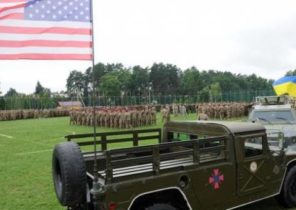
July 19, Deputy defense Minister left Bob Wark (Robert Work) and in his place was appointed a former Vice President of the Boeing company Patrick Shanahan (Patrick Shanahan).
Recall that Wark was a passionate ideologue of the new approaches to combat operations of the future. His strong point is the introduction of artificial intelligence and robotic systems in the armed forces, the development of a strategy for war in space and conducting combined combat (as we call Multi-Domain Battle — the simultaneous conduct of combat operations in various areas: on land, sea, air, space, cyberspace and the electromagnetic spectrum) in terms of “limitations of access” (A2/AD Anti-Access, Area Denial). Actually the development of large-scale strategy of the “Third opposition” (Third Offset Strategy), designed to provide military-technological advantage of the United States to Russia and China, is also the brainchild Wark.
Before the new Deputy defense Minister are slightly different tasks and may be somewhat more mundane and immediate, and not so much a strategic and action-Packed as the previous before the second man in the armed forces of the United States.
Patrick Shanahan at Boeing since 1986 worked as a civil and military areas. He was responsible for the program for the production of the Boeing 757, for the revival of the Boeing 787 after numerous delays in production, engaged in financial management programs the Boeing 737, 747, 767, 777 and 787.
With regard to military equipment, Shanahan was involved in the program at Boeing missile defence and delivery of the tiltrotor V-22 Osprey, helicopters CH-47 Chinook and AH-64D Apache. According to his colleagues, Shanahan put in high positions where there has been a lot of problems, technical failures and business crumbled, and Shanahan managed to re-establish business.
In fact the tasks of Sinajana is optimized and a significant acceleration of the procurement and supply of military equipment to the U.S. armed forces and deliverance Ministry from bureaucracy. The Pentagon with the arrival of trump wants to conduct their business more as a business. Boeing of Shanahan for saving various programs called “Mr. Solution”. He could successfully oversee complex technological projects in terms of limited budget and under pressure from the media and the public. It competence in these fields and led him to a senior position of Deputy Minister of defense.
In the end, Shanahan will practically be responsible for the military budget at $ 600 billion and the portfolio of military orders by 1.6 trillion dollars. In theory, it needs to distance itself from Boeing and not make unfounded biased decisions in the interests of the company.
It is expected that Shanahan will be able to primarily deal with the problems and high cost of F-35 aircraft, as well as his personal experience in project of a missile defense signals that the US plans to pay more attention to the protection against missile attacks on the country from potential enemies.
It is believed that Shanahan recommend Trump directly, the current Pentagon chief James Mattis, who needs “technocrats” with experience at the Ministry of defence, not the billionaires.
On August 1, just two weeks after the speech of Sinajana office, the Pentagon has presented the US Congress with their proposals to change the procurement system. It is proposed to split the Management of logistics, technology and logistics Pentagon into two new offices: one will be responsible for research and design engineering, and procurement and material support.
It will create about 12 new departments, including new Analytics, which will give advice on investments in military technologies of the future and examine technology programs of potential adversaries.
In General in the Pentagon tending to reduce the amount of time spent on reporting superiors, and load all the departments that their basic technical functions, on the other hand, trying to make it so that competence from one Department to complement the competence of the other.
Will also restructured the tasks of the Director and he will get more power in the allocation of resources to the various business processes within the Pentagon.
While all of this restructuring should occur with a 25% reduction of the administrative apparatus of the Pentagon.
Shanahan, in turn, noted that if the Pentagon does not focus on the development of new technologies, the U.S. will fall behind global competitors. In his view, the speed of procurement is as nurturing professional basketball player: we need to find talent, quickly develop and start to play in the big leagues.
For the Pentagon, these “players” will be the new technology. They must be found quickly to bring to health and run to the troops. It is necessary to build an effective system and, most importantly, to work closely with private companies who achieve success in certain technology research and development.
Shanahan openly says that his goal is to make business it easy to do business with the state and that the state had failed to help private contractors to do more for less money. The essence of cooperation is not to force companies to do something for the Pentagon at the behest and to use them the best existing solutions and thereby help private contractors to monetize technology. All theory will remain in the win.
Innovations should come into force no later than 1 February 2018. And they are not all encouraging. For many commenting on future reform looks just like another bureaucratic reorganization, and not the transformation of the military state apparatus into something similar to a business company. Also focus on the technologies of the future vzvyvaet concerns that the current needs of the armed forces of the United States will not be satisfied. And finally, the rate for effective work of traders in the interests of national defense in the field of large technology programs can be a banal failure, as the military-industrial complex to pursue their financial interests and years “milked” the budget, reaching the desired Pentagon financial and technical result.







